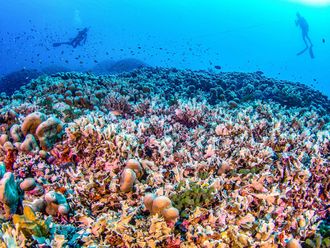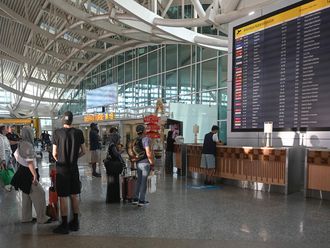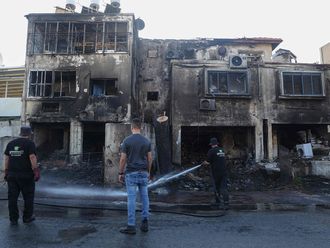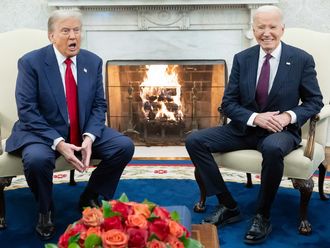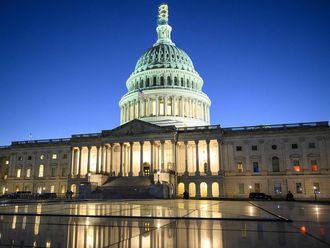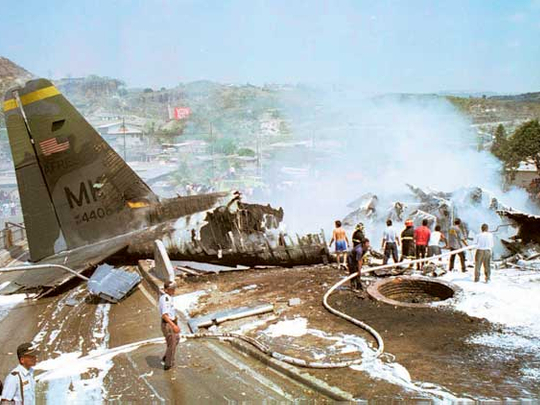
Tegucigalpa: As the plane began its corkscrew descent, the couple across the aisle braced for landing at Honduras’ Toncontin International Airport.
Seats fully upright. Tray tables stowed. Heads down and hands clasped together in utter terror.
The pilot banked hard left, then left again. The plane dropped abruptly. Oh, my God, someone in a back row said.
Then the hard thud of the runway, and a long round of applause.
Whew. Another routine landing at one of the world’s scariest airports.
Built in the 1940s along a narrow ridge in the middle of the Honduras’s steep-sided capital, Toncontin has a precipitous approach and one of the world’s shortest international airstrips at 1,862 metres (most runways at Washington’s Dulles International Airport, for example, are 3,048 metres or longer). It is known to pilots as a “visual landing”, meaning aircraft must be brought down manually, along a spiralling downward pattern, without the benefit of instruments or automated controls.
The final approach requires a hard, last-minute bank to the left, and commercial aircraft drop 365 metres per minute, a rate exceeding international aviation guidelines. The wheels pass so close to the rooftops and mountainsides below that they set off cockpit safety alarms, said Fernando Orellana, who has been landing at Toncontin for 24 years as a military then commercial pilot.
“There is very little margin for error,” he said.
And errors have been made. At least 10 planes have crashed in and around Toncontin since 1989, when a Boeing 727 operated by a Honduran carrier clipped the hillside on approach and burst into flames, killing 131. It remains the deadliest aviation accident in Central American history.
Toncontin’s inadequate runway and fear-inducing approach have been a drag on business development and tourism for Honduras. Yet the curse of Toncontin has proven more insidious. It has even brought down a president.
The trouble started May 30, 2008, when an Airbus 320 operated by Taca Airlines ran out of room on a rain-slicked runway, plunging down an embankment into several cars. Five people, including the pilot, were killed.
“The plane came down too fast and bounced,” said Paola Mena, a flight attendant who was aboard. “I looked out the window and knew we couldn’t stop in time.”
The crash prompted Honduras’s then-president, Manuel “Mel” Zelaya, to order Toncontin closed to most commercial aircraft, leaving the country’s capital (population 1 million) essentially without an airport. Flights were to be rerouted to Soto Cano Air Base, more than 80km away, where the United States has maintained a military presence since the early 1980s.
This did not go over well. Toncontin’s runway remained closed for two months, and Honduras’ business community, already souring on the left-banking Zelaya, grew incensed.
“It was a huge disruption to business, investment, exports — everything. It changed the way Zelaya was viewed,” said Epaminondas Marinakis, president of the Honduran Chamber of Tourism. “That was how it all started.”
Opposition to Zelaya built, particularly among the strata of Honduran society that uses airplanes. Within a year after the airport closure, Zelaya was toppled in a coup, plunging Honduras into the political crisis and deep polarisation that has troubled the country ever since.
On Sunday, Hondurans will go to the polls to elect a new president, with Zelaya’s wife, Xiomara Castro de Zelaya, among the leading candidates. Far more pressing issues are at stake — a struggling economy and a murder rate that ranks highest in the world — than the future of Toncontin.
Commercial flights to the airport have long since resumed, but with additional restrictions and safeguards.
Commercial pilots must have extra training and special certifications to land. Larger aircraft, including US flights operated by Delta, American and United, arrive only during the day. Even the repatriation flights for Honduran deportees run by US Immigration and Customs have opted to land 241km away in San Pedro Sula, instead of Tegucigalpa.
Removing portions of the hillside at one end of the tarmac has helped extend Toncontin’s runway by several hundred feet. But the long-term plan to move the capital’s airport out of the city has stalled. And building a new commercial airport would be staggeringly expensive, said Orellana, the pilot.
“No one is going to loan that kind of money to a country as corrupt as this one,” he said with a laugh. “So, flights will continue landing here — at least until there’s another crash.”


